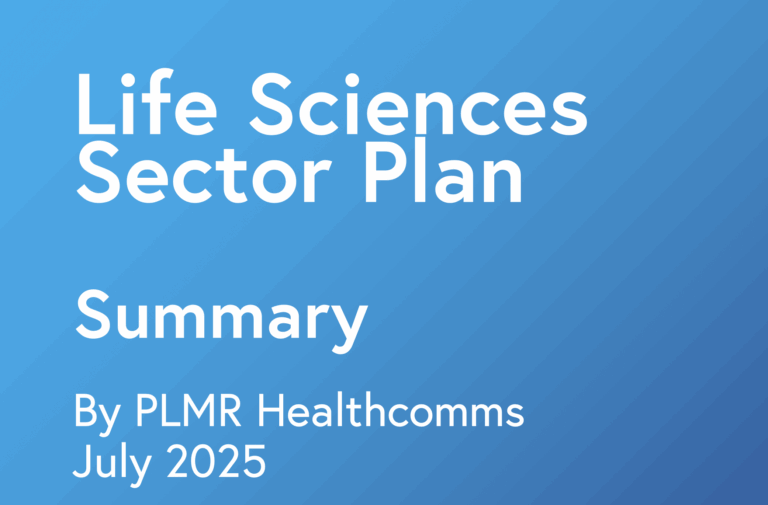Analysis
The Life Sciences Sector Plan has been through it all – deep involvement with partners from across the system in its development, many drafts, and a few scheduled launch dates. But it is finally here and is an important milestone for a government which has set Life Sciences as one of the 8 key sectors to help boost economic growth in the country.
The Plan itself, much like the 10 Year Health Plan, is ambitious, particularly for the MedTech sector. There is a clear recognition of the particular challenges which have plagued the sector for some time; including slow and costly regulations, challenges with procuring devices, diagnostics and digital, and the slow adoption and spread of technology.
With clear action for each of these issues, the MedTech sector can feel that it has, at the very least, been heard and understood, and that the Government has committed to changing processes to support greater availability of innovation for patients across the country. Movement on international recognition and reliance models in regulation, as well as delivery of mandated funding for some devices, diagnostics, and digital tools, would be truly transformative for MedTech, digital health, and digital therapeutics innovators. These key issues are consistently raised as barriers to the growth of the sector and as issues which prevent patients accessing the most innovative technologies. Addressing these alone would support growth for the sector and deliver better options and outcomes for the NHS and its patients.
Although easy to write in the Plan, transforming the regulation and adoption of technology has been challenging for previous Governments, and industry might take this Plan’s ambitions as a direction of travel, and not a done deal. The Plan is meant to be delivered over the next decade, and these challenges are not going to be addressed overnight. It will require almost a rewiring of the system (from central Government down to individual NHS bodies across the country) to ensure success.
The Plan, like the 10 Year Health Plan, does not have a delivery strategy; but it does have a range of metrics, linked to Senior Responsible Officers within government departments, and crucially timelines for delivery. This will help innovators across the country to hold the Government to account for delivery.
For pharmaceutical companies, the Plan builds on the commitments made in the 10 Year Health Plan and sets out sensible actions across clinical trials, NICE and MHRA alignment, and R&D spending. Several of the policy ambitions have been on the pharmaceutical sector’s radar for some time, and companies across the sector should take some positive notes from their inclusion in the Plan. However, VPAG is more than just an elephant in the room, with the lack of progress on this fundamental issue blamed for the delayed launch of the Plan. At our recent insights event with Steve Barclay MP, we heard about the trade-offs that will influence decision making on this issue – we would be happy to share these upon request.
For industry, both MedTech and pharmaceuticals, there is a role to play in delivering this Plan. The Government has acknowledged that the Life Sciences sector cannot be merely stakeholders but must be partners in its delivery. This will mean meaningful engagement right away to work out how to deliver some of the early metrics mentioned in the Plan, and how some of the more challenging issues can be tackled in the medium to long-term.
This Plan provides the opportunity to make real and meaningful change for the Life Sciences sector, particularly within MedTech, and the opportunities to engage in its delivery should be grasped so that the delivery of this Plan is done with you, not to you.
Summary
Today (Wednesday 16th July), the Government released its Life Science Sector Plan, outlining targeted actions to support world-class research and development, attract investment, grow advanced manufacturing, and accelerate health innovation.
The Plan aims to position the UK as the leading life sciences economy in Europe by 2030, and the third globally by 2035, behind only the United States and China.
Please find a comprehensive summary of the Plan here. If you have any questions or would like to set up a meeting to discuss further, please do contact your PLMR Healthcomms Account Team.
Useful Links




